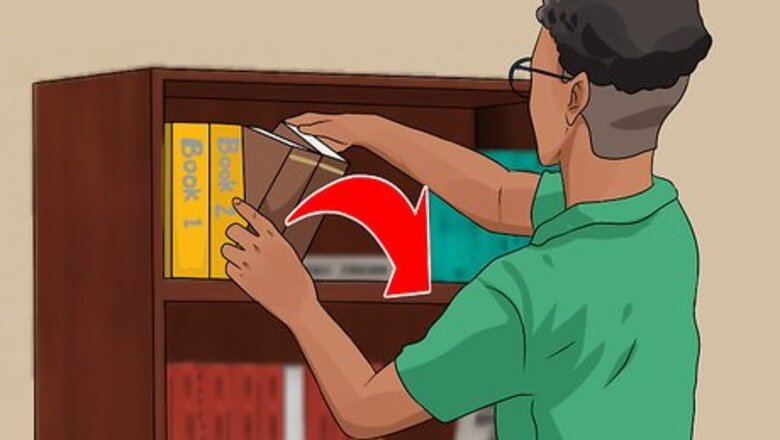
views
Sorting Through Your Books
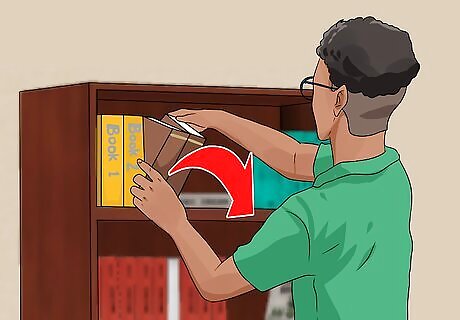
Remove books by shelf. Decluttering is a process best done in small chunks. Go through your books shelf by shelf. This can make the task seem manageable and may also help you decide which books to keep, give away, or toss.
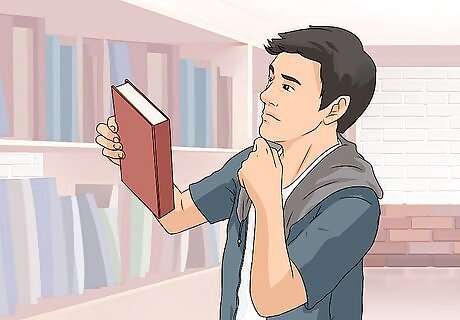
Figure out each book's value. Each of your books will have a different type of value you attach to it. Knowing this value can help you separate books into piles for reorganization. Ask yourself the following questions to determine the value your books: Does the book serve a purpose? Does it have sentimental value? Does it have monetary value? Will I reread or reuse it? Have I read it? Will I ever read it?

Separate by pile. Have boxes labeled for “keep,” “donate,” “sell/trade,” “store,” and “trash.” As you determine your books' individual values, place them in these different piles. You can reevaluate each pile before you begin placing the books back in the bookshelves or giving them away. Consider having an undecided box for those you're wavering on. Recognize, however, that this can create the temptation to put nearly everything in this pile.
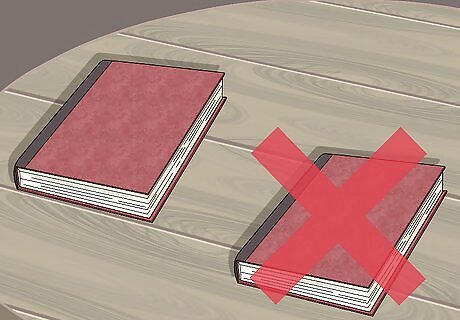
Get rid of duplicates. Sort out duplicates and give them to friends or a charitable organization. This is one of the easiest things you can do to cut down on the clutter in your bookshelves. Consider keeping duplicate if you have multiple volumes and use the newer and older versions.

Decide about paperbacks and magazines. Large numbers of trade fiction paperbacks and magazines can quickly clutter up the most organized bookshelf. Weigh the value of paperbacks and magazines to yourself and then determine if they are better given away. Place magazines and paperbacks you want to keep in decorative bins, files, or containers. This can keep bookshelves organized while giving them a pop of color and texture.
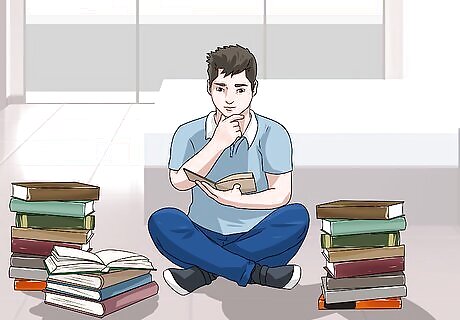
Review your decisions. Go through each pile of books methodically. Ask yourself about each book's value to you and whether you should keep it. This can help you further cull your collection and keep it decluttered on the shelves. Ask family members for their opinions on your decisions. This can minimize the risk of giving away something another person holds dear.

Toss books. Throw away any books and/or magazines that are ripped, torn, molded, or otherwise unusable. Not only does this keep your bookshelves decluttered, but also minimizes the risk of them cluttering another person's collection. Consider taking them to a recycling facility to help protect the environment.
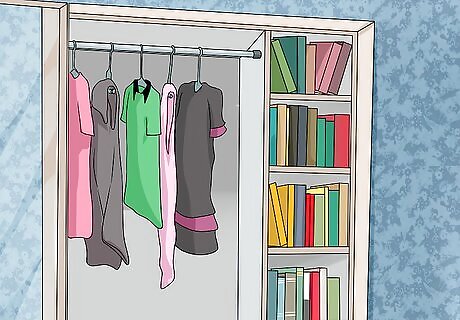
Consider storage. Place any books you still want but don't want to display in a small closet or other storage space. This can keep them from cluttering your bookshelves without having to get rid of the books. Make sure to close and label any boxes of books you choose to store.
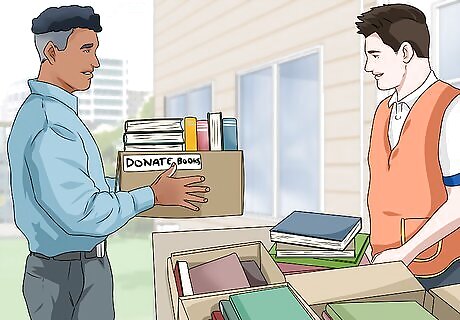
Donate books. Give out your books that you don't want to keep. Friends, colleagues and loved ones may be happy to have a copy of the book. You can also donate your books to a local library or charitable organization, which may distribute them to the less fortunate or sell them for a small sum to help others.
Organizing Your Uncluttered Bookshelves
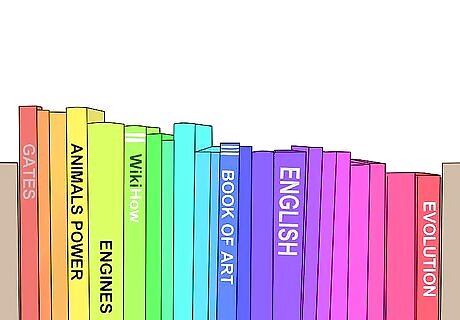
Plan an overall organization scheme. Consider how you want your bookshelves to look before repopulating them. Maybe you want them to include decorative touches, or alphabetized or color-coded books. A good rule of thumb is one-third each books, accessories, and empty space. Developing an organization scheme for your books can help you quickly and effectively reshelve your collection without cluttering it again. Consider some of the following organizational schemes: Alphabetically By genre By color By subject
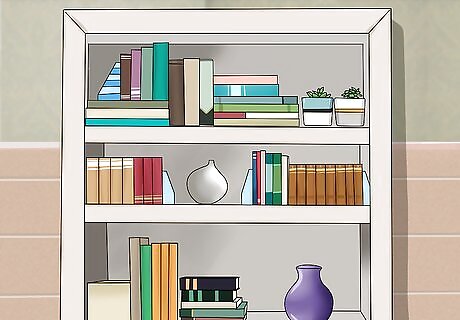
Decorate your bookshelves. Adding design elements can also help organize your bookshelves and keep them clutter-free. Painting or wallpapering individual shelves or the walls behind them not only frames your books, but can be a nice reminder to avoid filling them with too many books or other sundry items. Mix your books with picture frames, bookends, and collectibles to keep the space visually interesting. Consider items with rounded edges, which make a nice contrast with the books.
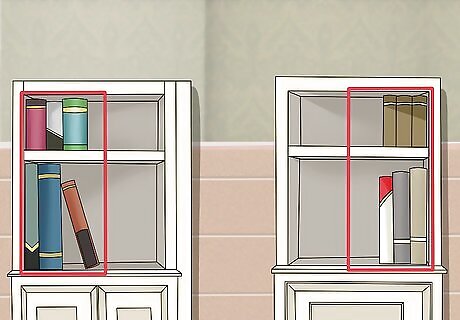
Arrange big items first. Put your larger books on the far right end of the shelf. For matching shelves on the left side, place the larger items on the far left. This scheme ensures you can more easily fill in the shelves without overstuffing them. It also creates a visually interesting space that you can easily keep decluttered over time. Put larger non-book items in the far corners of shelves as well.
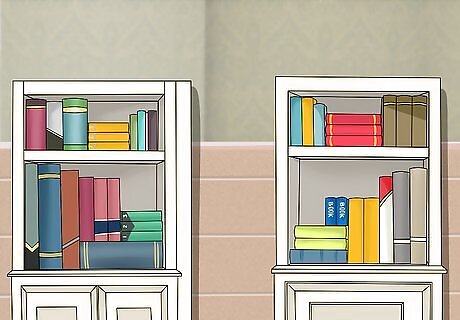
Fill in empty spaces. Begin putting your smaller books and items onto the shelves according to your organization plan. Place larger items toward the bottom and smaller ones towards the top. Alternate stacks of horizontal and vertical books. This can maximize space, keep your books organized, and add visual interest.

Lay books horizontally. If you're organizing by genre or subject, you may need more space to accommodate the books than a vertical arrangement allows. Having a few books vertically organized and other horizontally stacked can open up even more space in your bookshelves. It also allows you to use the stacked books as bookends for the vertically-arranged volumes and vice versa. A good ratio to organize your books is 60% vertical to 40% horizontal.

Pull books forward. Line up each book with the end of the shelf floor. This keeps the space uniform. It can also prevent you from stuffing additional books on to the shelves.



















Comments
0 comment